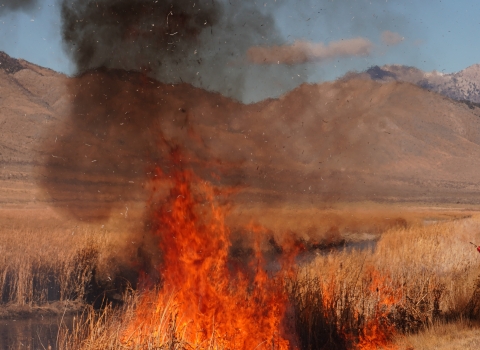DENVER – Today, the U.S. Fish and Wildlife Service (Service) in consultation with the Utah Division of Wildlife Resources (UDWR) and affected counties released a 10-year general conservation plan (GCP) that will aid the conservation of threatened Utah prairie dogs while benefiting economic productivity in the region and reducing undue regulatory burdens.
Utah prairie dogs are protected from harmful impacts that constitute "take" under the Endangered Species Act (ESA), including incidental take that may result from activities such as residential, commercial and industrial development. However, the Service can issue permits that would authorize incidental take of Utah prairie dogs as long as there is a conservation plan in place that minimizes and/or mitigates impacts to the species. The GCP applies to all communities across the range of the Utah prairie dog including portions of Iron, Garfield, Beaver, Wayne, Piute, Sevier, and Kane counties in Utah.
The GCP incorporates elements of the 2015 UDWR Utah Prairie Dog Management Plan for Non-federal Lands. Several partners will help implement the GCP, including the Utah Department of Natural Resources, Utah Division of Wildlife Resources, Bureau of Land Management, U.S. Forest Service, and Iron, Garfield, and Beaver counties. The support and contributions of these partners offset many mitigation requirements and resulted in lower standard fee requirements for individual developers.
Under a GCP, the Service prepares the primary documents and issues permits to individual developers or master permit holders such as counties or cities. At this time, the Service is issuing master permits to Beaver, Garfield, and Iron Counties for development projects. A master permit allows for a faster authorization process for developers compared to issuing individual permits. The Service will consider master permit applications from other cities or counties as requested.
The Utah prairie dog is subject to many environmental stressors, including habitat loss and the disease sylvatic plague. The GCP includes conservation measures to help combat these threats, including prairie dog translocations, habitat and plague management at translocation sites, and the protection of occupied Utah prairie dog habitats through conservation banks, conservation easements, and land acquisitions from willing sellers. These conservation measures are consistent with recovery objectives for the species.
The mission of the U.S. Fish and Wildlife Service is working with others to conserve, protect, and enhance fish, wildlife, plants, and their habitats for the continuing benefit of the American people. We are both a leader and trusted partner in fish and wildlife conservation, known for our scientific excellence, stewardship of lands and natural resources, dedicated professionals, and commitment to public service.
Connect with our Facebook page at http://www.facebook.com/USFWSMountainPrairie, follow our tweets at http://twitter.com/USFWSMtnPrairie, watch our YouTube Channel at http://www.youtube.com/usfws and download photos from our Flickr page at http://www.flickr.com/photos/usfwsmtnprairie/.



